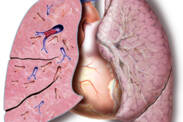Arterial disorders
Arterial disorders include

Aneurysm
An aneurysm, also known as vascular edema, is a serious vascular disease. It affects the arteries and aortas. It is divided into right, dissecting, and false. A person can live with an unrecognized aneurysm for many years, however, its rupture immediately threatens a person's life.

Atherosclerosis
Atherosclerosis is a disease of the arteries. The wall of the artery is affected by a disease process. It takes place over a long period of time and is progressive due to negative conditions.

Carotid artery stenosis
Narrowing of the carotid artery is a serious condition that can lead to impaired blood supply to the brain and even stroke. Atherosclerosis is not the only cause.

Myocardial infarction
Myocardial infarction or even heart muscle infarction is an acute form of ischemic heart disease. Ischemia, or bloodlessness, is caused by a blockage in the coronary artery that leads blood to the heart muscle cells. The main cause is a sudden closure or long-term narrowing of the blood vessel.

Peripheral Artery Disease
Peripheral artery disease is a term for diseases of the arteries that supply various parts of the body. Blood vessels are usually damaged due to atherosclerosis, but it is not the only cause.

Pulmonary embolism
Pulmonary embolism (PE) is an acute condition in which blood vessels in the lungs become clogged. The most common cause is thromboembolic disease. A blood clot is released and travels through the vessels as an embolus. It clogs vessels. The massive form of PE is life-threatening.

Kawasaki disease
Kawasaki disease is an acute febrile illness characterized by inflammation of small and medium-sized blood vessels. In most cases, the disease affects children under the age of 5, especially boys. It is relatively rare in our country. Children from Japan are most often bothered. The disease has several stages and in most cases healing occurs.









